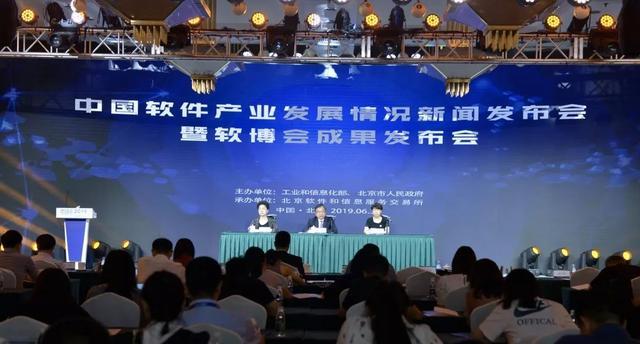

NEWS
CONTACT US
Endela Electronics (Shenzhen) Co., Ltd.
Fax: + 86 - 755 - 8524 0865
Email: wade@endela.cn
Address: Building A5, Loul Gang Blue Sky Technology Park, Songgang, Bao'an District, Shenzhen
Blockchain: Top-level design increasingly improved, two major fields expected for large-scale application
Category:
Industry News
Author:
Source:
http://www.cena.com.cn/industrynews/20210616/112162.html
Published Time:
2021-06-17
Visits:
1
Recently, the Ministry of Industry and Information Technology and the Central Cyberspace Administration of China jointly issued the "Guiding Opinions on Accelerating the Application and Industrial Development of Blockchain Technology" (hereinafter referred to as the "Guiding Opinions"), which clarifies the specific goals for the size of the blockchain industry in the next 5 and 10 years, and focuses the industry's breakthroughs on the two areas of the real economy and public services.
In recent years, as blockchain has gradually risen to the national strategic level, relevant government promotion policies at all levels of the central and local governments have sprung up like bamboo shoots after a spring rain, and the enthusiasm for industrial development has soared. In the view of industry experts, the release of the "Guiding Opinions" is of extraordinary significance, meaning that China's top-level design for the development of the blockchain industry has been basically completed. Under the spring breeze of policies, which industries will enjoy the benefits, and can blockchain break the "high enthusiasm, difficult implementation" dilemma and usher in a true "spring"?
Rapid development and difficulty of implementation coexist
In October 2019, at the 18th collective study of the Central Political Bureau, the country identified blockchain technology as an important breakthrough for independent innovation, making it clear that it is necessary to accelerate the promotion of blockchain technology and industrial innovation and development; in April 2020, the National Development and Reform Commission included blockchain technology in the category of new infrastructure. Since then, various national ministries and commissions have actively introduced relevant policies. According to statistics, in 2020, national ministries and commissions, provincial governments and provincial capital cities issued more than 200 policies, regulations, plans and documents related to blockchain technology.
Encouraged and driven by policies, the main entities participating in the blockchain industry have blossomed everywhere, with technology giants, central enterprises and state-owned enterprises, and innovative and entrepreneurial enterprises constantly emerging, actively exploring pilot applications. According to statistics from the Saidi Blockchain Research Institute, as of now, there are more than 1,350 blockchain companies in China with actual investment and output, and the companies' segmented services cover underlying technology research and development, industry applications, industrial promotion, blockchain media, blockchain security services, solutions, App applications, and other fields. IDC data shows that in 2020, the size of China's blockchain industry has reached US$561 million.
"In recent years, the development of China's blockchain industry has accelerated, but the difficulties in industrial development, such as the difficulty of implementing scenarios, are also particularly prominent." Said Liu Quan, director of the Saidi Blockchain Research Institute, in an interview with a reporter from China Electronic News.
According to Liu Quan, in view of the current global development of core blockchain technologies, China still lacks internationally recognized original technologies, especially in terms of basic core technologies such as consensus algorithms and smart contracts, and its dependence is relatively large. In addition, the lack of universal underlying platform technology, imperfect performance, and insufficient compatibility mean that most application scenarios that can be integrated with blockchain are still in the initial exploration stage, and the depth of integration between blockchain and the real economy is insufficient. These pain points are all factors that hinder the implementation of blockchain scenarios in China.
Blockchain technology is still a new technology, and it is not omnipotent. Its development logic and application value need to be viewed rationally.
Zhang Yihui, director of the China Academy of Information and Communications Technology's Trusted Blockchain Promotion Program Office, told a reporter from China Electronic News that blockchain has the value potential of the next generation of "Internet", and its digital infrastructure, underlying construction, and Internet logic are similar. Blockchain needs to fit specific scenarios (such as scenarios where multiple parties are involved and trust is lacking) to better play its role. These scenarios place high demands on the amount of data samples and the timeliness of uploading, but blockchain technology is not yet mature in terms of security and performance. In addition, many current applications are still immersed in traditional management models. How application parties break through traditional business logic, balance the relationships between various parties, and achieve multi-party governance is more a matter of alliance governance, which requires data to be included in the framework of production factors, to achieve standardization, and to form a higher value closed loop.
Timelines and roadmaps are clearly defined
Based on the current development status of China's blockchain industry, the Guiding Opinions, adhering to the five basic principles of application-driven, innovation-driven, ecological cultivation, multi-party collaboration, and orderly security, clearly define development goals. By 2025, it is planned that the comprehensive strength of the blockchain industry will reach the world's advanced level, the industry will take initial shape, 3-5 internationally competitive backbone enterprises and a number of innovative and leading enterprises will be cultivated, 3-5 blockchain industrial development clusters will be built, and the blockchain standard system will be initially established. By 2030, the comprehensive strength of the blockchain industry will continue to improve, the industrial scale will further expand, blockchain will be deeply integrated with the next generation of information technologies such as the Internet, big data, and artificial intelligence, achieving widespread application in various fields, and several internationally leading enterprises and industrial clusters will be cultivated, forming a more mature industrial ecosystem.
In Liu Quan's view, the release of the Guiding Opinions is of extraordinary significance, meaning that the top-level design of the country in the development of the blockchain industry is gradually being improved. The Guiding Opinions are the first time that the country has formulated a clear development roadmap and timetable for the blockchain industry. "The 14th Five-Year Plan period will be five years of great development and prosperity of the digital economy, and it will also be five years of accelerated blockchain innovation, ecological construction, widespread implementation, and inclusion in regulation. The Guiding Opinions will further promote the value transformation of blockchain technology in the era of interconnection of all things with data as an element." Said Liu Quan.
In addition to determining the development roadmap, the development of blockchain also has clear goals and supporting measures. Chen Xiaohua, chairman of the Blockchain Professional Committee of the China Mobile Communications Union and chief digital economist, said that the Guiding Opinions propose cultivating a group of "famous products, famous enterprises, and famous parks", which clearly defines specific goals for the development of the entire blockchain ecosystem, is conducive to the integrated development of industries, enterprises, and governments from various dimensions, and also provides support for the implementation of local government policies, how blockchain enterprises can keep up with national policies, and the positioning of blockchain industrial parks.
Through the observation of China's underlying blockchain technology, it is not difficult to find that compared with the advanced blockchain technologies in the United States and Europe, China still has a certain gap. "Blockchain technology originated from public chains, and some underlying platforms of alliance chains are improvements on foreign public chain technologies." Zhang Yihui said that the key tasks in the Guiding Opinions emphasize the need to establish an open-source ecosystem, which is an important measure for China to adapt to the needs of technological development and provide a good way for technological innovation. The advanced experience of foreign blockchain technology partly relies on open-source communities, because open-source ecosystems can attract developers, help the underlying code and general capabilities be copied and learned from, and form a virtuous cycle system. Therefore, China can also consider using the establishment of open-source communities to build a technical upgrade and iteration environment, and then achieve complete chain lines, and form an international industrial ecosystem.
Two major areas Expected to welcome to a wave of implementations
The greatest application value of blockchain technology lies in improving the efficiency and security of the operation of some industries, and also in subverting the traditional application tools of some industries. Based on the blockchain's industrial Internet platform, through the consensus mechanism and smart contract technology, the co-governance and win-win situation across enterprises of the same level and across the upstream and downstream of the industrial chain can be achieved, creating a more vibrant and collaborative digital industrial ecosystem.
The real economy and public services are crucial to global digital development and improving the efficiency of industry operations, and they are related to the national governance system and the modernization of governance, and are the two most beneficial supports for economic and social development. Yu Jianing, the rotating chairman of the China Communications Industry Association Blockchain Specialist Committee, believes that only by deeply integrating with the real economy and effectively serving the main line of supply-side structural reform can the value and power of blockchain technology be demonstrated, promoting the formation of a virtuous cycle between finance and the real economy.
The release of this new policy provides mid-level supporting facilities for the top-level design of blockchain, and this mid-level refers to the two major industry applications of 'real economy' and 'public services'. Wu Tong, deputy director of the CECBC Blockchain Special Committee of the Ministry of Commerce, told a reporter from China Electronic News. Previously, China's blockchain had a relatively perfect macro-policy environment, but the degree of emphasis on key areas still needed to be improved. The release of the new policy will focus on two major application areas at the mid-level industry level, formulate some implementation rules and industry regulations, bridge the gap between the macro-policy level and the micro-technology level, and enable the development of blockchain to be targeted.
In recent years, China has accumulated many favorable conditions in promoting the combination of blockchain with the real economy and public services. Currently, many blockchain pilot applications are concentrated in these two areas, such as supply chain management, product traceability, government services, and evidence preservation, and the adaptability scenarios of blockchain itself are also here. Taking the application of evidence preservation as an example, Internet courts in Hangzhou, Beijing and other places have used blockchain technology for judicial evidence preservation, and cross-regional mutual recognition of medical insurance and real estate has also been piloted and achieved good results.
“The support of the new policy will be conducive to centralizing the direct regulatory power of funds and data, accelerating the process of incorporating data into the production factor framework, opening up value and monetization channels, and enabling the integrated application of blockchain and public services to achieve large-scale implementation.” Wu Tong said.
In the real economy, the most popular application is supply chain finance. Specific projects have been implemented in sub-sectors such as supply chain finance, trade finance, payment clearing, and fund management. Data show that as of November 2020, among the domestic registered blockchain information services, the number of projects in the financial field ranked first, accounting for 36%. In addition to finance, the attention of digital assets, enterprise services, medical care, power energy, and agriculture is gradually strengthening. This is in line with the overall goal of the "Guiding Opinions" on the 10-year plan for the blockchain industry, which is to tilt towards applications in the real economy.
“The Guiding Opinions will be a strong driving force for the development of the blockchain industry for some time to come. Under the incentive of policies, blockchain technology is expanding from point to surface, starting with applications that have achieved better results in pilot applications in the two major industries, gradually opening up 'highways' one by one. However, to develop from independent highways into an integrated urban transportation network, blockchain needs to be highly coupled with other emerging technologies such as AI, cloud computing, big data, and the Internet of Things, and to penetrate and integrate with each other.” Zhang Yihu said.
Keywords:
Design, block, industry, development, technology, application, sector, guidance, opinion





